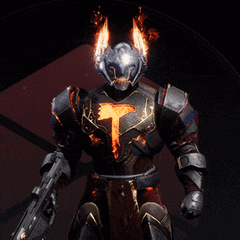
mariushm
Member-
Posts
17,765 -
Joined
-
Last visited
Awards
This user doesn't have any awards
Profile Information
-
Gender
Male
-
Location
Romania
-
Occupation
Freelancer
System
-
CPU
AMD Ryzen 7 5800x
-
Motherboard
Gigabyte B550M AORUS PRO-P
-
RAM
16 GB DDR4 3200 Mhz CL16
-
GPU
Gigabyte Aorus RX 570 4 GB GDDR5
-
Case
Aerocool XPredator Black Edition (Full Tower)
-
Storage
500GB Samsung 980 M.2+4TB HGST+4TB-WD+2TB-WD+1TB-WD
-
PSU
Seasonic X-650 80+ Gold
-
Display(s)
Samsung T240 (1920x1200 24") + Samsung 2494HM (1080p 24")
-
Cooling
Scythe FUMA 2
-
Keyboard
Logitech K280e
-
Mouse
Logitech MX518
-
Sound
Logitech X-540 (5.1) + ALC1200 onboard
-
Operating System
Windows 10 Home
Recent Profile Visitors
The recent visitors block is disabled and is not being shown to other users.
mariushm's Achievements
-
I put extra ram now my pc wont start
mariushm replied to roguezxro's topic in CPUs, Motherboards, and Memory
It's easy to put a memtest on a usb stick and test the ram : https://www.memtest86.com/download.htm Select from bios to start from USB stick and leave the test running for one pass (should be at least 20 minutes) - If you get errors either the ram is faulty or in rarer cases, the motherboard can't handle that many ram sticks at that high frequency (for example it could run 1 or 2 sticks at 3200 Mhz, but may only be able to do 2833-3000 with 4 sticks) If you get errors you can try inserting just one stick at a time and running the test, to see if only one stick gives errors. If there's no errors, you can try disabling XMP or manually setting the frequency to 3000 Mhz or 2833 or even 2666 Mhz, just to test. The Corsair kits should be fairly compatible. You don't say what motherboard you have. Are there any bios updates for that motherboard? -
Case power button wire connection
mariushm replied to OzZy15's topic in CPUs, Motherboards, and Memory
The manual is here : LAN216-manual.pdf On page 4, you have the description of the connector : So if you look at the connectors, the pins on the side with the little arrow are from top to bottom 1, 3, 5, 7 and the pins on the opposite side are 2, 4, 6 , 8, 10 On the motherboard, the header is (page 27 in manual) : So what you have to do is take the connector, have the arrow pointing towards the top of the board and insert it into the LEFT side of the header This way PLED+ and PLED- are your power led pins, so they'll connect with pins 1 and 3 of the header, power button is pins 5 and 7, so they'll connect to PW+ and PW- (though there's no polarity, it's an on/off momentary connection) and pins 6 and 8 match the reset switch pins in the header. -
Personally, I would say "Oh f*@k off with that shit" It's a nickname, it doesn't have a sex or gender or identity ... you can call yourself Martian Joe and I won't care. Leave all that crap outside the forum. I don't care how you identify or what your pronouns are when I answer to questions or reply to posts.
-
Just need to clarify how to apply thermal paste.
mariushm replied to Gat Pelsinger's topic in Laptops and Pre-Built Systems
difference between best paste possible and an average paste will be like 1c to 2c max in temperatures. laptop will adjust fan speeds to keep temperatures above some thresholds so you wouldn't notice much difference unless your laptop was really clogged with dust making fans ineffective. clean with a paper towel / napkin / handkerchief that's wet with isopropyl alcohol or acetone (nail polish remover you can buy from local stores or pharmacies). Regular sanitary alcohol (that denatured blue alcohol) would also work but not as great. Other solvents like gasoline (yeah, it's solvent) or wd40 (mix of isopropyl,other solvents and some anti rust chemicals) will also work, better than alcohol, but must clean surfaces after with plain water and let it dry. Use spudgers to open laptop... paste.. apply one or two blobs of paste kind of like a corn or larger than a pea ... if you want the spread it use some ruler or plastic something, but it shoudn't be needed, when you put the heatsink bank it will squish and spread paste. blow some air into the radiators at the end of the heatpipes to make more airflow happen inside -
Well, I got it working.. I'll stop ramujan when it's done in around 20 minutes when it's done with most units. Hopefully nfs at home will auto increase the threads.
-
I've left the client running at home and got up to nearly 80k points on that Ramanujam machine What's the deal with the next projects, where should I move .... i guess steeplechase because javelin should be done by now
-
The drivers are already pretty much only updated if there's some critical bugs or some very popular game crashes. When AMD drops support you just won't get driver improvements, you'd still be able to play games even new ones if they support the platform. A lot of games will support Polaris as it's very similar to the chips on Xbox consoles so if the game is ported from xbox or backwards, they'll have shaders and all that included in the game, making it easy to support Polaris cards.
- 34 replies
-
- rx polaris
- rx 400
-
(and 1 more)
Tagged with:
-
Makes no difference, just have the same order on both ends. Best to use a regular patch cable you buy from the store with connectors preinstalled. It may be worth making your own cable if you need a lot of power through the cable (as in more than let's say 50 watts), you'd use proper solid core AWG23 cables and the right ethernet connectors.
- 4 replies
-
- networking
- straight thru
-
(and 3 more)
Tagged with:
-
There's T568A (starts with green) and T568B (starts with orange) With 100 mbps ethernet cards, if you want to create a direct connection between two computers, you need a crossover cable, where the TX pair from one PC goes into the RX input of the other PC. Hence why the two pairs of wires are switched in one connector. I'm not 100% sure but I think the reason why the B version is preferred in cables made automatically (patch cables etc) is because the way the pairs are twisted, it's easier for automated machines to untwist pairs, and rearrange the wires. With 1 gbps or higher ethernet cards, all four pairs are used to transmit data, so all four pairs would have to be twisted, but 1 gbps and higher ethernet cards are supposed to have automatic pair detection making crossover cables no longer needed. but if you want to actually make a crossover gigabit cable it would look like this, either one of the two versions would work.
- 4 replies
-
- networking
- straight thru
-
(and 3 more)
Tagged with:
-
Bundle is fine. The MSI board is not the greatest or best price for features (in lots of countries you can get Gigabyte or Asrock models that have more usb ports on IO shield, better layout for pci-e slots, stuff like that) for same or better price compared to that MSI board. But otherwise, the board is fine to use with a 5700g. Intel solution is only worth it if you go with 12 gen or newer, and at least 6 cores
-
Motherboard manufacturers typically don't update those QVL files unless there's a major bios update that improves memory compatibility - so late on socket AM4 such updates no longer happen... they usually happen within the first year or so after a socket launch, so on socket AM5 they may still happen (it's around 1 year and a half old). Usually, a few months after a motherboard model is released, they stop adding memory sticks to those QVL files, and a lot of those models in the QVL files are sticks they already have in their inventory from previous motherboard models. Pretty much any DDR4 3200 and 3600 Mhz memory stick will function on a B550 motherboard these days. Issues may still occur when you're filling all four memory slots and use high capacity sticks (ex 4 32 GB sticks) but even in such cases you just may not be able to run the sticks at 3600 Mhz but you'd be able to run them at 3200 or 3000 Mhz. The 5700G is fine, but as an observation as it has integrated graphics and only half the L3 cache (this one affects performance a bit in games), and the pci-e is limited to 3.0 x16 speeds, the processors without integrated graphics can do pci-e 4.0 (double the theoretical bandwidth, but in practice you won't notice a difference with the 6700xt )
-
You're rambling again with overclocking a b-dies and overclocking shit the guy doesn't care about ... read the room ... the computer's gonna be used by a kid playing games, he won't care about overclocking and getting a few extra fps. Just let it be and recommend the cheapest 3200 CL16 or CL18 and be done with it. He'd be better off spending a few dollars more to get a 6 core cpu instead of a cheap 4 core one instead of messing around with various cpus. OP I see Kuwait in your profile so I guess going the refurbished computer route is not an option for you there. Also if you insist on Intel , be careful with the gen 10/11 vs gen 12 and higher because while the socket is the same, some chipsets only support gen 10 and 11, and for 12 or 13 you may need a different chipset. Double check. With AMD it's easier, it's just socket AM4 or socket AM5 - AM4 is DDR4 only , AM5 is DDR5 only.
-
What's the equivalent from AMD?
mariushm replied to RevGAM's topic in CPUs, Motherboards, and Memory
On socket AM4, you're pretty much limited by the number of pci-e lanes the chipset gives you , combined with the 20 pci-e lanes the CPU brings (16 go to video card slot, 4 go to first M.2 connector) So for example with B550 chipset, you're left with 10 or so pci-e lanes that can be put either on a pci-e x4 and one m.2 connector and some pci-e x1 slots, or they can play around with using only 2 pci-e lanes for the second m.2 connector On socket AM5, there's now 24 pci-e lanes coming from cpu available to user (there's 28 in total, but 4 are used to make the connection to chipset) so you may have 8 pci-e lanes available for M.2 connectors, if the motherboard maker doesn't use the extra pci-e lanes for extra usb controllers or wireless cards. With chipsets, with B650 you have 8 pci-e 4.0 lanes and up to 4 pci-e 3.0 lanes (if the sata ports are not used)\ (note that the pictures are wrong, it's actually only 24 pci-e 5.0 lanes from cpu X670 chipset based boards are basically made using two regular chipsets connected together... so you get more pci-e lanes and usb ports and all that : so look for x670 motherboards if you really want lots of pci-e lanes, but that will be reflected in the price... for example the cheapest board available locally is Gigabyte X670E Aorus Pro X at $385 : X670E AORUS PRO X Specification | Motherboard - GIGABYTE Global You get 4 M.2 connectors, 2 from cpu and 2 from chipset(s), and the couple extra pci-e x16 slots are with 4 lanes and 2 lanes. -
While it doesn't have as much effect as on AM4, it's best to go with 3200 Mhz or higher. As for DDR5, go with the widest available / tested frequency (look in the QVL list and see what memory frequencies are most tested) Some Intel chips may limit the maximum ram frequency to some value, but higher frequency sticks will still work, but at the maximum frequency supported by chipset There's not much savings by going with lower frequency ram sticks.
-
I have two 24" monitors on my desk, one 1920x1200 , one 1080p ... if I were to replace them, I'd probably go for a 40" or bigger, with some picture in picture functionality (so I could have the screen split in two seamlessly and have game run on one half and the other half treated as a second monitor) In your budget, I think AOC CU34G2X is well reviewed : https://au.pcpartpicker.com/product/LmRgXL/aoc-cu34g2xbk-340-3440-x-1440-144-hz-curved-monitor-cu34g2xbk Review here: https://www.rtings.com/monitor/reviews/aoc/cu34g2x It's 34" but wide, 3440x1440 , which would work well with a RTX3070, and it's also HDR10 capable, and up to 144 fps. If you can stretch your budget to $700, LG 32GP850-B may be an option ... it's reviewed a bit better (though lacks HDR) : https://au.pcpartpicker.com/product/8snypg/lg-32gp850-b-320-2560x1440-165-hz-monitor-32gp850-b You get lower resolution at only 2560x1440 but it's IPS panel with better color accuracy. I'm not sure I'd go with it instead of the AOC above. At 800$ you get a very good for gaming (and also movie watching) Gigabyte 4K monitor but with lousy ergonomics : https://au.pcpartpicker.com/product/WchFf7/gigabyte-m32uc-315-3840-x-2160-160-hz-curved-monitor-m32uc-sa See the review here: https://www.rtings.com/monitor/reviews/gigabyte/m32uc



















